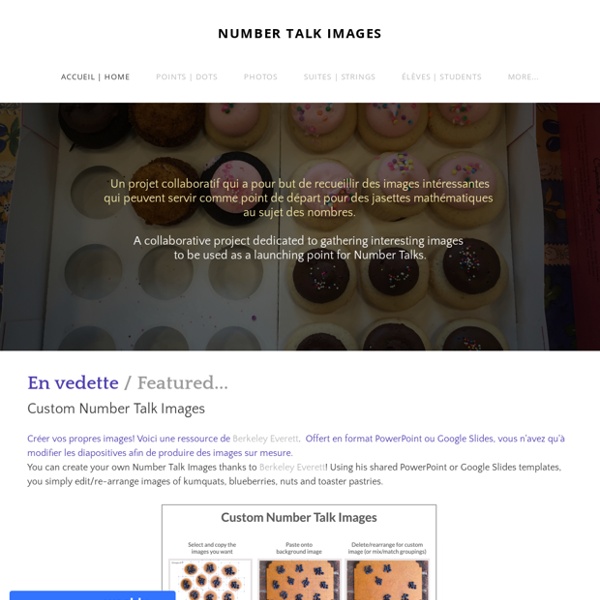



A Series of Step-By-Step Writing Mini Lessons Menu 0 A Series of Step-By-Step Writing Mini Lessons Step-by-Step Instruction, Writing The Robertson Program for Inquiry-based Teaching in Mathematics and Science Curriculum – Geometry and Spatial Sense Sorting and classifying 3-dimensional shapes by attributesClassifying 3-dimensional shapes by geometric propertiesDescribing location using positional languageRelating shapes to other shapes, to designs, and to figuresComposing and decomposing shapesRecognizing transformations Context Children are briefly presented with a 3-D structure made of multilink cubes and they must then re-create the structure from memory. Materials Pre-assembled figures made of multilink cubes (see photos of cube figures below)Bags of cubes (two colours) for each pair of students
Splat! Welcome to Splat! You are only moments away from a VERY POWERFUL, highly interactive number sense strategy that can be used at any grade level! This post includes 50 (fifty!) free, downloadable PowerPoint math lessons! Watch the video, download some (or all) of the lessons, and experience what happens when you unleash this resource in your classroom! The Decision Playbook – Make Thoughtful Decisions. Here's how. How to teach Decision Making This is worth learning Splat! for Google Slides - 40 Lessons - Steve Wyborney's Blog: I'm on a Learning Mission. More Free Animated Math Lessons Coming Soon! Subscribe to get the latest content by email. Success! Now check your email to confirm your subscription.
Smore Newsletters for Education Five research-based principles of second language instruction should form the basis for the education of English language learners in grades PreK – 12. Teachers can use the five principles and specific teaching and learning strategies to accelerate the learning process, promote academic achievement, and foster academic language acquisition (Levine, Smallwood, & Haynes, 2012a, 2012b). Teaching by these principles is helpful for ALL of our students, but is essential for our ELLs and struggling learners. New Video Resources: Instructional Routines to Improve Students’ Mathematical Thinking New Visions for Public Schools curriculum teams have adopted instructional routines, which are “designs for interaction that organize classroom instruction” because they are a powerful tool that can help support teachers at all stages of development in their careers. Below is a personal narrative from one of our instructional specialists, David Wees, who has over 25 years’ experience working in education, on why he and the New Visions math team have adopted instructional routines. David also highlights new videos and resources that New Visions has developed to help you get started using these routines in your own classroom. The Challenge of Initiating Mathematical Discussions in the Classroom When I first started teaching, I quickly developed procedures and routines for things like handing out materials, but my lesson plans were all over the place. Any student mathematical discussions that occurred were haphazard and almost always initiated by students.
Digital Emergency Medicine UBC Faculty of Medicine’s Digital Emergency Medicine is proud to share with you the Second Edition of Learning for Life program resources for educators teaching grades 4-7! Learning for Life is an education initiative that promotes healthy lifestyle behaviours and builds digital health literacy skills among intermediate elementary students and families, in BC. Learning for Life provides students with competencies to use technology to support their health, to critically assess information provided through technology, and to balance technology usage with the promotion of healthy lifestyle behaviours, using up to date Canadian guidelines.
Pan Balance – Expressions Explore algebraic equivalence with the following investigation. Enter the expression 2x into the red pan, and enter the expression x + 4 into the blue pan. Enter the value x = -5 into the box near the top. What happens? Change the value of x to 0 and then to 5.